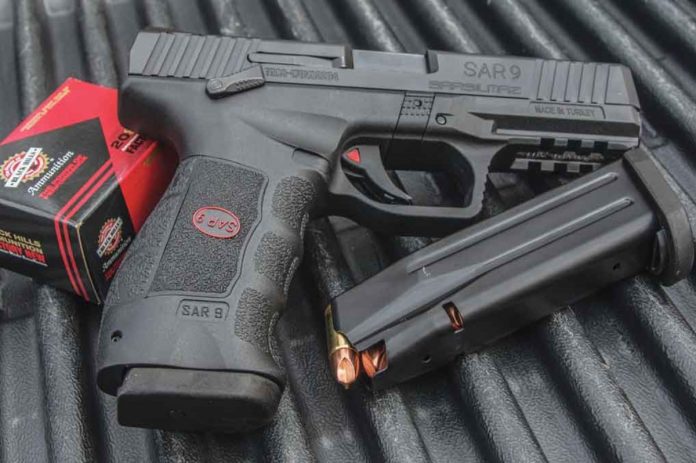Six months after reclaiming the once Armenian-majority region of Nagorno-Karabakh in a lightening military campaign, Azerbaijan plans to upgrade its fighter aircraft fleet over the next decade. All reports indicate that Pakistan and Turkey will be the providers and not Russia, the traditional weapons supplier of Azerbaijan. This is an indication that despite the currently friendly Moscow-Baku ties, Azerbaijan is tilting further towards the Turkey and Pakistan nexus.
Reports in Azerbaijani and Pakistani media in late February claimed that their respective countries agreed to sell an undisclosed number of Pakistani JF-17C Thunder fighter jets for $1.6 billion. At the same time, Azerbaijan officially joined Turkey’s TF Kaan fifth-generation fighter program in July 2023, indicating that the Caucasian country will obviously acquire that jet, which made its maiden flight last month. Baku made this decision despite Russia previously marketing the 4.5-generation Su-30SM, Su-35, and MiG-35 fighters.
It is recalled that Azerbaijan President Ilham Aliyev stated in 2018 that his country had spent about $5 billion on military equipment from Russia. This included armoured vehicles, air defence systems, transport and combat helicopters, artillery, multiple rocket launchers, tanks, and Smerch rockets.
Although this Russian equipment was critical, along with Turkish-made drones, in successfully ending Armenian secessionist ambitions in Nagorno-Karabakh, Aliyev is evidently deepening ties under the “Three Brothers” (Azerbaijan, Turkey and Pakistan) initiative at Russia’s expense, in line with his and Ankara’s guiding pan-Turkic ideology.
Russia has been Azerbaijan’s largest arms supplier until recent years, but Turkey, which had a clear pro-Azerbaijani position on the Nagorno-Karabakh issue, has exploited the fact that Russia always tried to maintain a balance between Azerbaijan and Armenia. Turkey took a decisive role from a security standpoint and started to expand its military cooperation with Baku, including through weapons sales, mostly notably drones, rocket launchers, and ammunition, among other weapons.
The reported JF-17 purchase from Pakistan further consolidates Azerbaijan’s gradual detachment from Russia.
Despite Azerbaijan emerging victorious over the Armenians, hostilities appear to have not died down since the country is using its oil wealth to overhaul its fighter jet fleet until the production of the Kaan begins in around 2033. It remains to be seen if Turkey will be successful in its efforts for an indigenous fifth-generation fighter jet.
Aliyev considers Russia and the West as unideal suppliers, even if Moscow has historically sold arms to Azerbaijan. For this reason, Azerbaijan is turning to Pakistan and Turkey as more reliable partners, especially since they will not cut off deals due to human rights violations, as the West would, or have perceived pro-Armenian biases or suspicion of pan-Turkism, as Moscow does in the eyes of many Azerbaijanis.
Azerbaijan’s participation in the Kaan project is the progression of the growing security partnership between Ankara and Baku that is rooted in their close modern political and diplomatic ties and traditional cultural and linguistic commonalities. It cannot be overlooked that although Russia was a top weapons supplier ahead of the 2020 war in Nagorno-Karabakh, it was Turkey that provided training and arms to Azerbaijan’s military, deployed special forces for combat, and transported mercenaries from northern Syria to fight.
The shift from Russia to Turkey as an arms supplier is not a surprise, but an Azerbaijani acquisition of the JF-17, which the Pakistan Aeronautical Complex and China’s Chengdu Aircraft Corporation jointly developed, would also be significant in deepening military ties with Pakistan and potentially with China.
Armenia received four Russian-made Su-30SM in 2020 after signing a deal for them a year earlier. The Su-30SM is more advanced than Azerbaijan’s Russian-made MiG-29s, but the JF-17, a modernisation of the Russian-made MiG-21/J-7 airframe with 4th-generation technology, would swing the advantage back in Azerbaijan’s favour as it has newer systems that provide electronic advantages.
It is telling that Azerbaijan’s reported interest in the JF-17 is to serve as a stopgap solution until the Kaan is available, without taking into consideration many of the Russian-made jets that could be used in the interim. Also telling is that Azerbaijan has no interest in Russia’s Su-57 fifth-generation fighter jet despite Russia’s long history of producing top-quality fighter jets.
Aliyev has instead opted for a Turkey-led program for the fifth-generation fighter jet that has no guarantee of succeeding, especially when considering Turkey’s other failed ventures, such as the Altay tank and TCG Anadolu, which was earmarked as an aircraft carrier but reduced to an assault ship and drone carrier. This, in fact, puts his country in a more vulnerable position as Aliyev is pinning his hopes on achieving air superiority over Armenia on a project that is unlikely to be achieved by 2033 and which will be old technology to what will be available in Russia by then.




